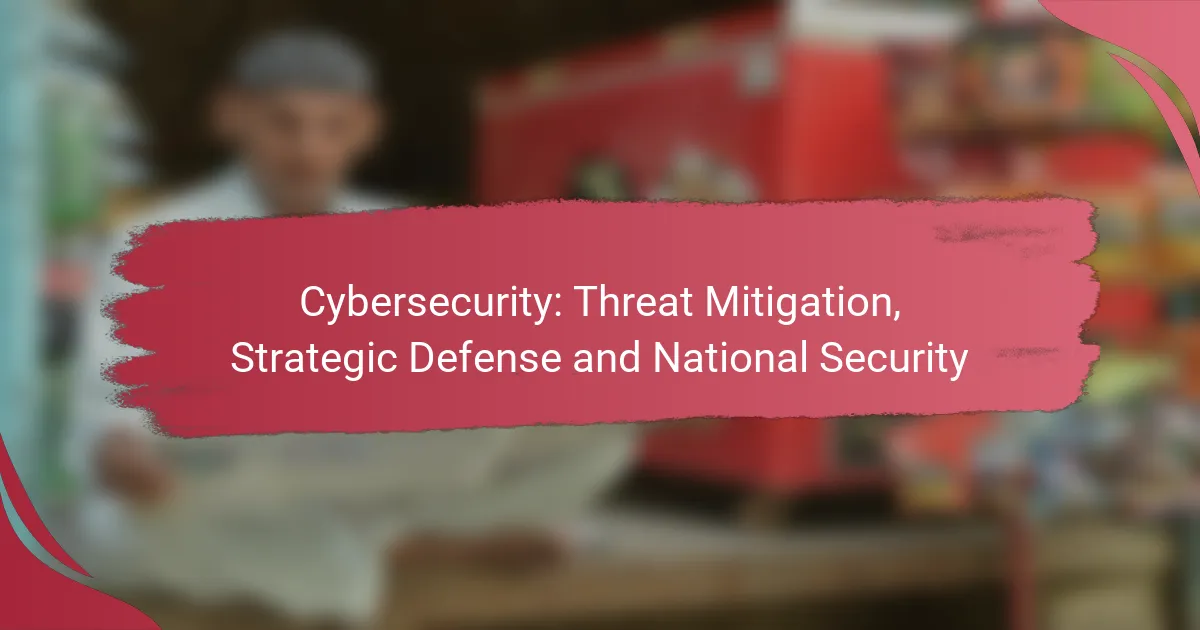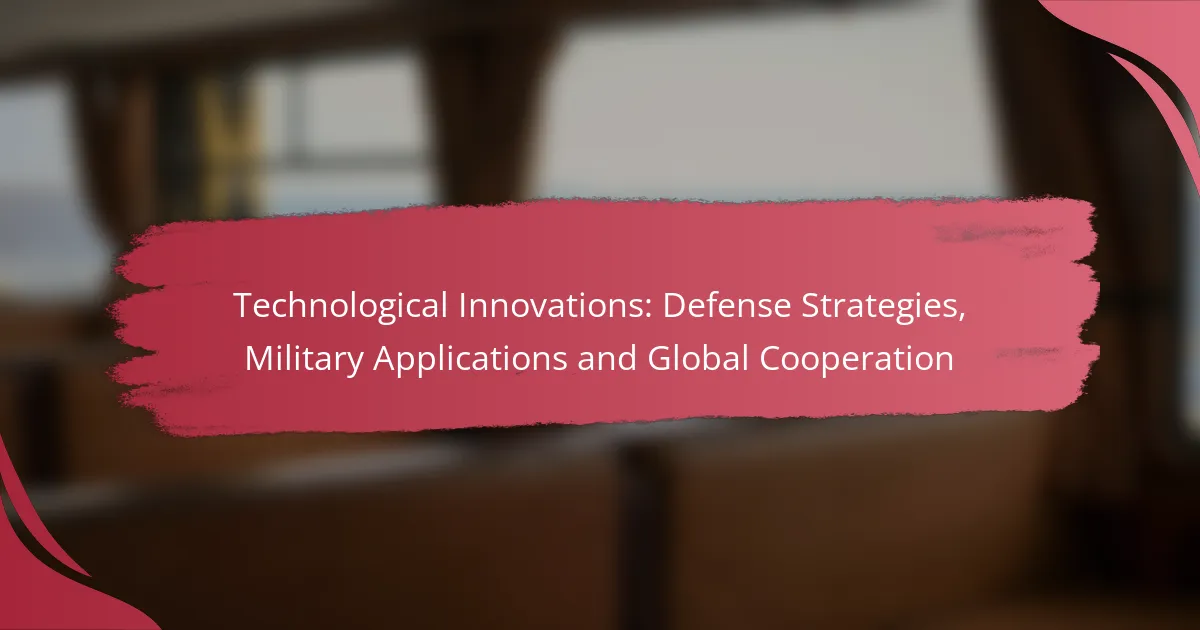In today’s digital landscape, cybersecurity threats such as ransomware, phishing, and insider risks pose significant challenges to national security and organizational integrity. Effective threat mitigation requires a multifaceted approach that combines technical defenses, employee education, and strategic planning. By proactively identifying vulnerabilities and adopting best practices, organizations can enhance their security posture and safeguard sensitive information against evolving cyber threats.
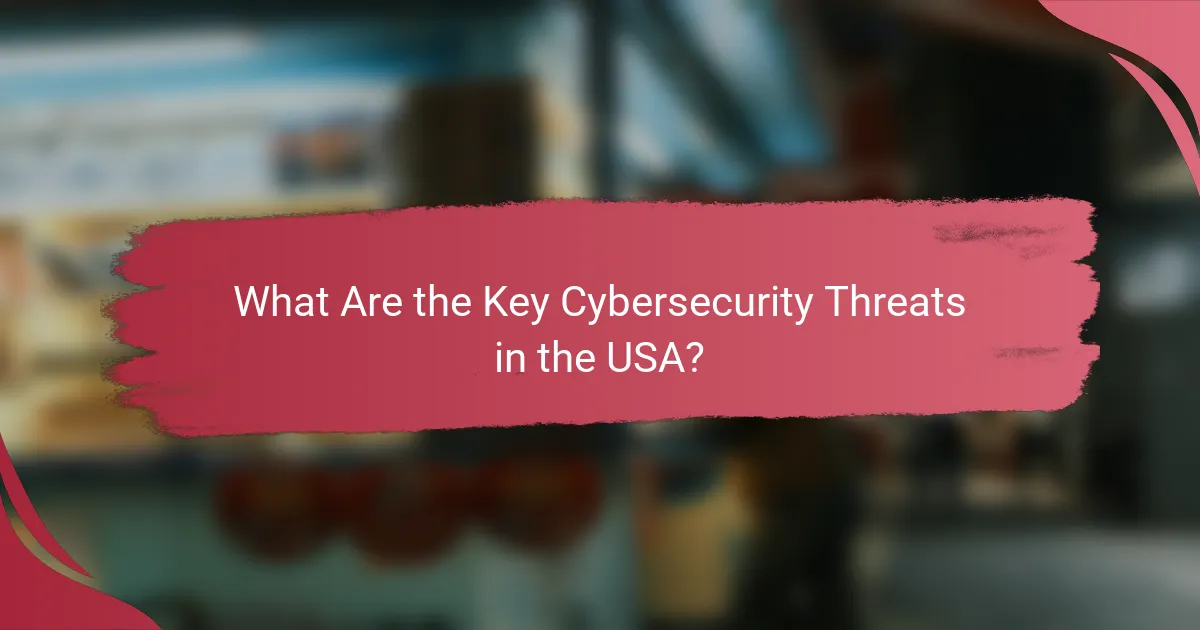
What Are the Key Cybersecurity Threats in the USA?
The key cybersecurity threats in the USA include ransomware attacks, phishing schemes, insider threats, supply chain vulnerabilities, and IoT security risks. Understanding these threats is crucial for organizations to implement effective mitigation strategies and protect sensitive information.
Ransomware attacks
Ransomware attacks involve malicious software that encrypts a victim’s data, demanding payment for decryption. These attacks have surged in recent years, targeting businesses, healthcare facilities, and government agencies, often resulting in significant financial losses and operational disruptions.
To mitigate ransomware risks, organizations should regularly back up data, maintain updated security software, and conduct employee training on recognizing suspicious activities. Implementing a robust incident response plan can also help minimize damage in the event of an attack.
Phishing schemes
Phishing schemes are deceptive attempts to obtain sensitive information by masquerading as trustworthy entities. These attacks often occur through emails or messages that lure individuals into providing personal data or clicking on malicious links.
To combat phishing, organizations should employ email filtering technologies and conduct regular training sessions to educate employees on identifying phishing attempts. Encouraging the use of multi-factor authentication can also add an extra layer of security against unauthorized access.
Insider threats
Insider threats arise from individuals within an organization who misuse their access to sensitive information, either maliciously or unintentionally. This can include employees, contractors, or business partners who pose risks due to negligence or malicious intent.
To address insider threats, organizations should implement strict access controls, monitor user activity, and foster a culture of security awareness. Regular audits and employee training can help identify potential risks and reinforce the importance of data protection.
Supply chain vulnerabilities
Supply chain vulnerabilities occur when third-party vendors or partners introduce risks to an organization’s cybersecurity. These vulnerabilities can lead to unauthorized access or data breaches, as attackers exploit weaknesses in the supply chain.
Organizations should conduct thorough risk assessments of their suppliers and establish clear security requirements. Regularly reviewing vendor security practices and maintaining open communication can help mitigate these risks effectively.
IoT security risks
IoT security risks stem from the increasing number of connected devices that often lack robust security measures. These devices can be exploited by attackers to gain access to networks and sensitive data.
To enhance IoT security, organizations should implement strong authentication protocols, regularly update device firmware, and segment IoT devices from critical networks. Conducting vulnerability assessments can also help identify and address potential weaknesses in IoT deployments.
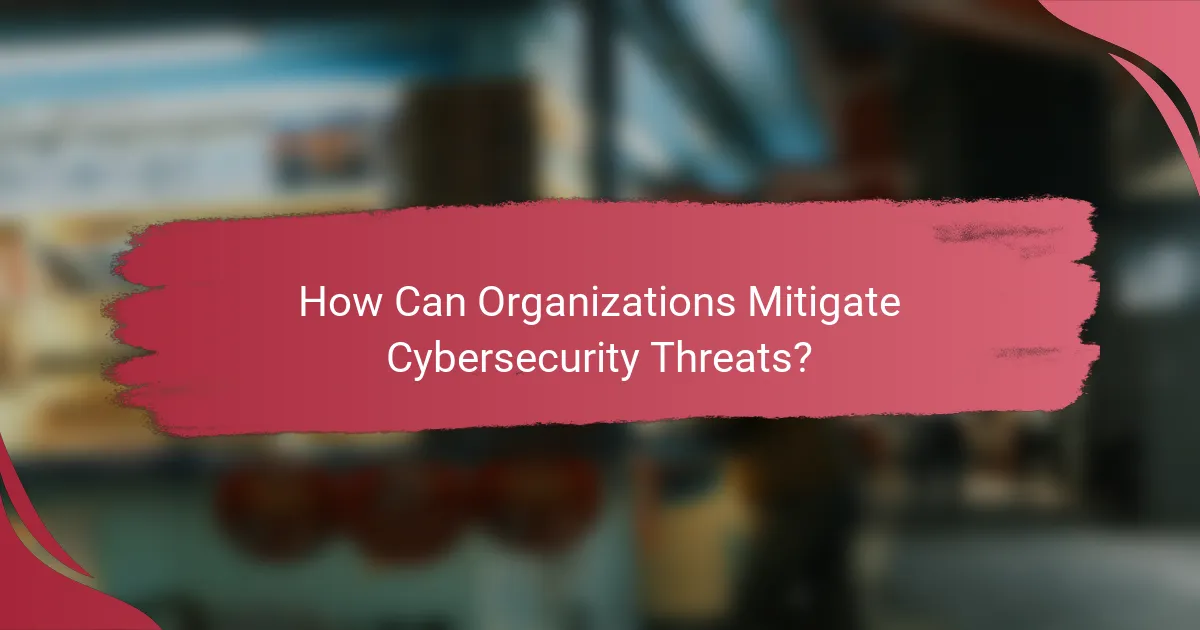
How Can Organizations Mitigate Cybersecurity Threats?
Organizations can mitigate cybersecurity threats by implementing a combination of technical measures, employee training, and strategic planning. These approaches help to reduce vulnerabilities and enhance overall security posture.
Implementing multi-factor authentication
Multi-factor authentication (MFA) adds an extra layer of security by requiring users to provide two or more verification factors to gain access to systems. This can include something they know (a password), something they have (a smartphone app), or something they are (biometric data).
Organizations should consider deploying MFA across all critical systems and applications, particularly those handling sensitive data. This significantly lowers the risk of unauthorized access, as attackers would need multiple forms of identification to breach accounts.
Regular software updates and patch management
Regular software updates and patch management are essential for protecting systems from known vulnerabilities. Cybercriminals often exploit outdated software, so timely updates can prevent potential breaches.
Establish a routine for checking and applying updates, ideally within days of their release. Automated patch management tools can streamline this process, ensuring that all systems remain secure without manual intervention.
Employee training and awareness programs
Employee training and awareness programs are critical in fostering a security-conscious culture within an organization. Regular training sessions can educate staff about the latest threats, such as phishing and social engineering attacks.
Consider implementing simulated phishing exercises to test employee awareness and reinforce best practices. A well-informed workforce can serve as the first line of defense against cyber threats.
Incident response planning
Incident response planning involves preparing for potential cybersecurity incidents by developing a clear, actionable response strategy. This plan should outline roles, responsibilities, and procedures to follow in the event of a breach.
Organizations should regularly review and update their incident response plans to reflect changes in technology and threat landscapes. Conducting tabletop exercises can help ensure that all team members understand their roles and can respond effectively during an actual incident.
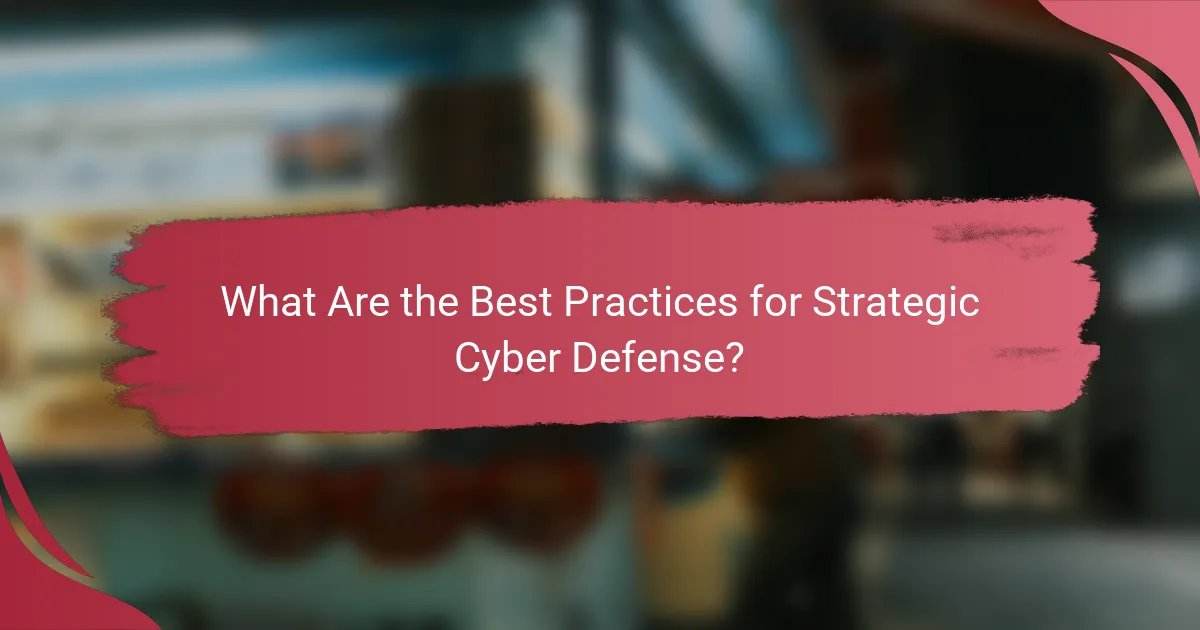
What Are the Best Practices for Strategic Cyber Defense?
Best practices for strategic cyber defense involve a proactive approach to identifying vulnerabilities and implementing robust security measures. Organizations should focus on continuous improvement through assessments, frameworks, intelligence, and architectural strategies.
Conducting regular security assessments
Regular security assessments are crucial for identifying vulnerabilities within an organization’s systems. These assessments can include penetration testing, vulnerability scans, and compliance checks to ensure adherence to industry standards.
Organizations should schedule these assessments at least quarterly, but monthly reviews are advisable for high-risk sectors. Establishing a routine helps in uncovering new threats and ensuring that security measures remain effective.
Establishing a cybersecurity framework
A cybersecurity framework provides a structured approach to managing cybersecurity risks. Frameworks such as NIST Cybersecurity Framework or ISO/IEC 27001 offer guidelines that help organizations develop their security policies and procedures.
When establishing a framework, organizations should consider their specific needs, regulatory requirements, and the potential impact of cyber threats. Regularly updating the framework in response to evolving threats is essential for maintaining resilience.
Utilizing threat intelligence platforms
Threat intelligence platforms aggregate and analyze data on potential cyber threats, enabling organizations to make informed decisions about their security posture. These platforms can provide insights into emerging threats, attack vectors, and vulnerabilities.
Investing in a reliable threat intelligence solution can enhance an organization’s ability to respond to incidents swiftly. It is important to integrate this intelligence into existing security operations for maximum effectiveness.
Adopting zero-trust architecture
Zero-trust architecture operates on the principle of “never trust, always verify,” meaning that no user or device is trusted by default, regardless of their location. This approach requires continuous verification of user identities and device health before granting access to resources.
Implementing zero-trust can involve segmenting networks, enforcing strict access controls, and utilizing multi-factor authentication. Organizations should assess their current infrastructure to identify areas where zero-trust principles can be applied effectively.
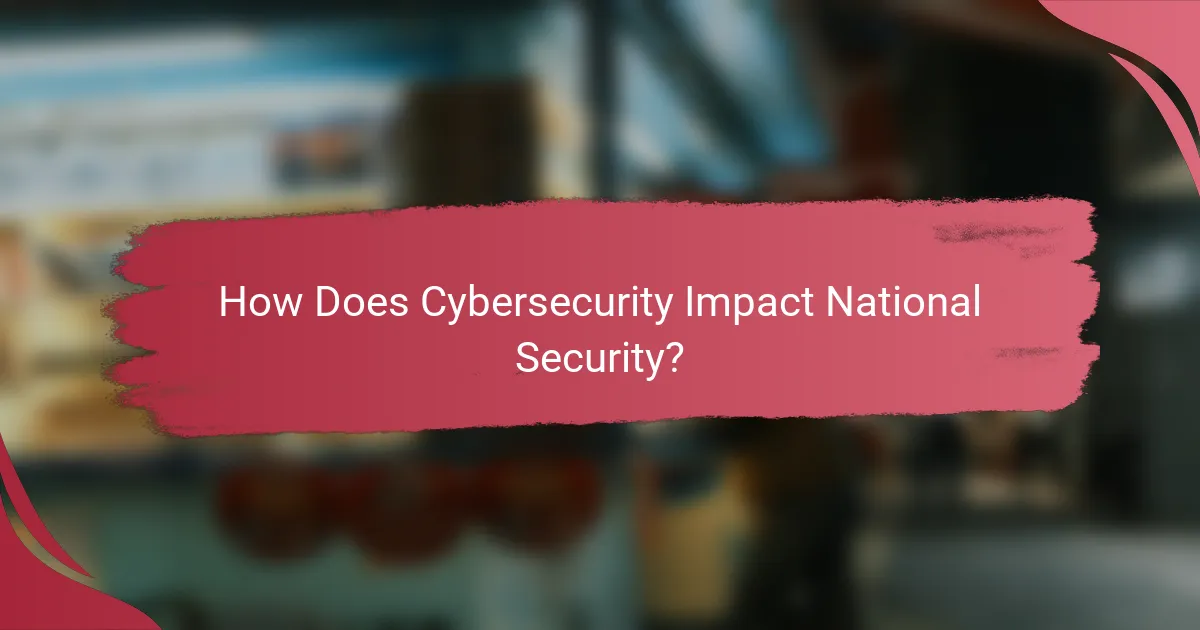
How Does Cybersecurity Impact National Security?
Cybersecurity plays a crucial role in national security by safeguarding sensitive information and critical systems from malicious attacks. A robust cybersecurity framework helps prevent disruptions that could undermine public safety, economic stability, and national defense.
Protection of critical infrastructure
Critical infrastructure, such as power grids, transportation systems, and financial services, is vital for a nation’s functioning. Cybersecurity measures protect these systems from threats that could lead to significant disruptions or even catastrophic failures.
Implementing strong security protocols, regular vulnerability assessments, and incident response plans can mitigate risks. For example, utilities often employ real-time monitoring systems to detect anomalies and respond swiftly to potential threats.
National defense against cyber warfare
Cyber warfare poses a unique challenge to national defense, as it can target military and governmental networks without traditional combat. Nations must develop advanced cybersecurity strategies to defend against espionage, sabotage, and other forms of cyber attacks.
Investing in cyber defense capabilities, such as intrusion detection systems and threat intelligence sharing, is essential. Regular training exercises can also prepare military personnel to respond effectively to cyber incidents.
Collaboration with international cybersecurity agencies
International collaboration is vital for addressing cybersecurity threats that transcend borders. Countries often work together through treaties and partnerships to share intelligence, best practices, and resources.
Engaging with organizations like INTERPOL or the European Union Agency for Cybersecurity (ENISA) can enhance a nation’s cybersecurity posture. Joint exercises and information-sharing platforms can help build resilience against global cyber threats.
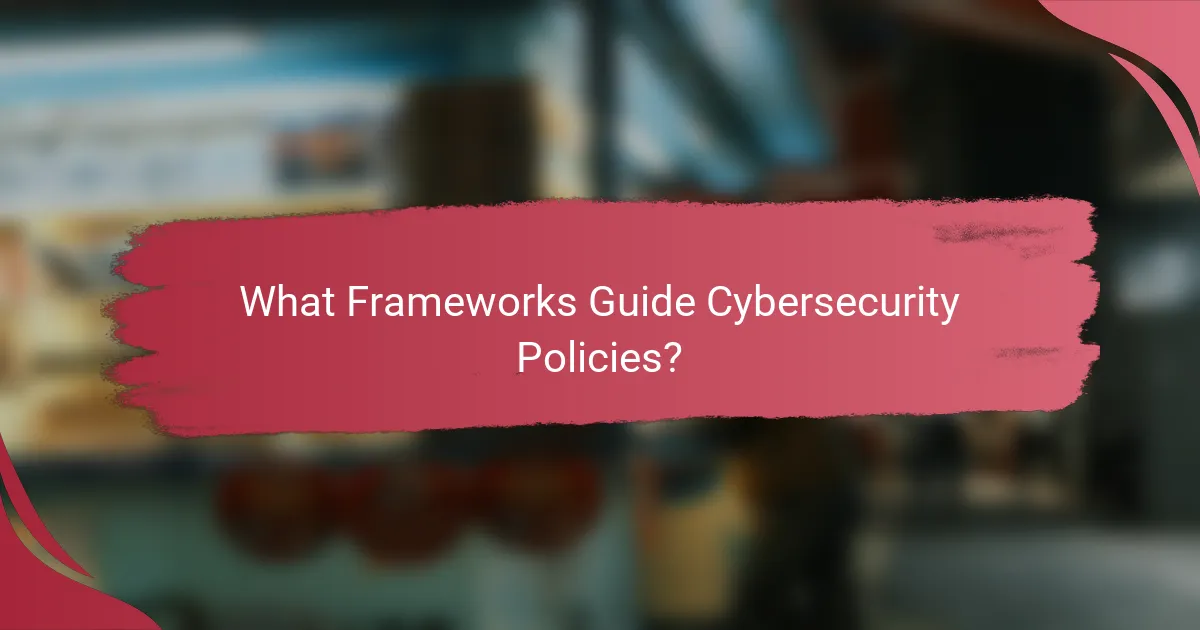
What Frameworks Guide Cybersecurity Policies?
Cybersecurity policies are guided by various frameworks that provide structured approaches to managing and mitigating risks. These frameworks help organizations develop effective strategies to protect their information systems and data from cyber threats.
NIST Cybersecurity Framework
The NIST Cybersecurity Framework is a widely adopted guideline that helps organizations manage and reduce cybersecurity risk. It consists of five core functions: Identify, Protect, Detect, Respond, and Recover, which provide a comprehensive approach to cybersecurity.
Organizations can use this framework to assess their current cybersecurity posture and identify areas for improvement. For example, a business might conduct a risk assessment to identify vulnerabilities in its systems, then implement protective measures such as firewalls and access controls.
When applying the NIST framework, organizations should prioritize their efforts based on the potential impact of threats. Regular reviews and updates to the framework’s implementation are crucial to address evolving cyber threats effectively.
